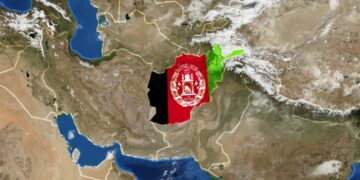Original article
Standard Research papers of 6000-8000 words in length, with tables in which hypotheses are tested, and results reported.
Review articles
The Journal shall only consider critical review papers that give perspective and a critical evaluation on topics that endear to the broader readership of the Journal. This article shall cover topics with significant development or progress in recent years, with comprehensive depth and a balanced perspective. They present a complete overview of the state of the art and can include: different schools of thought or controversies; fundamental concepts, issues, and problems; current research gaps, and potential developments in the field. As standard, Review articles carry an article processing charge consistent with A-type articles.
Special
Expedited communication of research of high importance. A word count o 3000 words are recommended as an upper limit for these articles. As standard, Letter/ Special articles carry an article processing charge consistent with C- type articles.
Perspective
Commentaries put published articles in the context of the wider research and its meaning to society. Generally, perspective articles present a brief viewpoint on a specific area of investigation and can include: a discussion of current advances and future directions; presentation of the authors’ perspective; accurate presentation and citations of other Author’s work, as relevant; original data as well as personal insights and opinions. A word count of 3,000 words is recommended as an upper limit for perspective articles. As standard, Perspective articles carry an article processing charge consistent with B-type articles.
Editorial
Editorials inform the reader on the main objectives of the research that pertains to the special issue theme, as well as placing it in a broader context. Ideally, an Editorial should present the contributing articles of the special issue but should not be a mere table of contents. A word count of 2000 words is recommended as an upper limit for these articles- subject to flexibility depending on the number of papers submitted to the special issue. As standard, Editorial articles carry an article processing charge consistent with C- type articles.
Letters to the Editor
These articles offer brief descriptions of significant findings, observations, or conclusions. The articles usually refer to either a clinical issue of general interest, a brief report of research findings, or a critical analysis of an article previously published in the Journal. Letters to the Editor are considered for publication provided they do not contain material that is under consideration or published elsewhere. Letters to the Editor contain a maximum word count of 1000. Letters to the editor articles carry an article processing charge (APC) consistent with C-type articles.
Technical Note
Scientific articles, reports, and summaries of about 500 words. The articles shall refer to products and technologies regarding social, economic, and environmental sustainability.
Conference reports
Articles and reports on significant global conferences on issues regarding social, economic, and environmental sustainability. The articles shall contain between 1000-2000 words.
Book Reviews
Reviews of approximately 500-1000 words on new books discussing social, economic, and environmental sustainability.
Book Chapters
A peer-reviewed scientific book chapter that contributes to the knowledge base in a way that increases citations and visibility.
Ethics in Publishing
Authors are expected to present their work with utmost intellectual integrity as is expected by the science community. Authors are expected to familiarize themselves with the Ethics Toolkit before submitting their papers for consideration. They should present original and authentic papers, and when they use previously published works, they should cite and quote them appropriately. Authors are advised not to submit a previously published paper or submit their paper to more than one primary publication site or Journal.
Declaration of Competing Interests
Authors must provide information on any personal or financial relationships with other organizations or persons that could result in a conflict of interests. As such, authors shall create a declaration of competing interests statement, which shall be used in mitigating conflicts of interests. Some conflicts may arise from patent application issues, employment issues, paid expert testimonies, or grants and funding conflicts.
Submission Declaration and Verification
By submitting a paper, the author demonstrates that the work presented for publication has not been previously submitted to other sites or journals for publication. As such, the publication shall be approved by all authors and authorities that oversaw the work. Once the paper has been accepted, the Author shall not be allowed to submit the work on any other platform or Journal in the same form without the official consent and permission of the copyright holder. The paper may be checked by the originality detection service Crossref Similarity Check for originality verification.
Use of Inclusive Language
Inclusive language recognizes and appreciates diversity, promotes equality and equity, and accords respect to all people. The content should employ a language that does not discriminate against the demographies that make a society, such as gender, age, culture, ethnicity, sexual orientation, disability, or health conditions. Authors should ensure they write free of bias and avoid using stereotypes, slang, or making cultural assumptions. Authors are advised to use gender neutrality by using plural nouns wherever possible. When coding terminology is used, we recommend avoiding offensive or discriminatory terms. We suggest using alternatives that are appropriate, respectful, and self-explanatory. These guidelines are meant as a point of reference to help identify appropriate language but are by no means exhaustive or definitive.
Author Contributions
Authors should submit an author statement file that outlines their contributions to the paper using the relevant CRediT roles for transparency: Conceptualization; Formal analysis; Data curation; Funding acquisition; Methodology; Investigation; resources; project administration; Software; Roles/Writing- Original draft; Writing-review and editing. Authorship statements should be formatted with the names of authors first, then credit roles follow.
Changes to authorship
Authors shall consider the order and list of authors before submitting their papers. Any modification of the names of authors in the authorship list should be made only before the paper has been accepted and only if approved by the Journal’s editor. In the case of modifications, the corresponding Author shall provide a reason for the modification and written confirmation from all authors that they agree with the modification.
The Editor can only consider the authors’ modification after the paper has been accepted in exceptional circumstances. During this period, the publication of the paper shall be suspended while the editor considers the request for a change of authors. In case the paper has already been published on an online platform, any request approved by the editor will result in an error.
Copyright
Authors will have to complete a ‘Journal Publishing Agreement’ once their papers and articles have been accepted. The corresponding author shall receive an email confirming receipt of the paper or article and a Journal Publishing Agreement form. The publisher’s permission shall be required for the resale and distribution of the articles and papers. Authors must obtain permission from relevant copyright owners to use or cite their works.
Role of Funding Sources
The Author shall provide details on how the preparation and research for the paper or article were funded. The Author shall describe the role of the sponsor throughout the research process and in the decision to submit the article for publication.
Publishing Fees
The Journal’s Open Access provides free online access to scholarly literature for a large pool of readers across the globe. Authors and readers can read, distribute and reuse the articles as they see fit. Following thorough peer review, articles accepted for publication incur a publishing fee. The article processing charges range between US$ 1000 to US$ 2000 per article. Please refer to the Funding Support Page for more information on discounts and waivers.
Open Access
The Journal provides a free Open Access platform for authors and researchers to publish their works. Please visit our Open Access page for more information.
Article promotion
For increased discoverability, articles and research papers are promoted through email alerts and, when appropriate, through press releases. This provides the Author with extensive coverage and accessibility to a wide range of readers and peer-reviewers.
Submission
The Journal’s submission system offers a step-by-step guideline through the submission process and uploading your files and documents. The system converts the Author’s articles files into a pdf format used in the peer-review process. Communication and feedback are done through Email.
Why Publish
The Journal’s review process is efficient, transparent, and unbiased. It ensures that the review process is objective. The real-time interaction between the Author and the reviewer speeds up the review process enabling research findings to be published timely. The reviewers’ identities, which remain confidential throughout the review process, are revealed upon article publication, and the reviewers are acknowledged for their work and contribution to the publication.
Queries
For technical support and questions concerning the editorial process, visit the support centre.
Peer Review
All contributions will be assessed by the editor for suitability for the Journal. An expert reviewer shall further assess papers that meet the relevance and suitability of the Journal for the scientific quality of the paper. The editor is responsible for the final decision regarding the acceptance or rejection of articles.
Article structure
Subdivision- numbered sections
The Author shall divide the paper or article into well-defined and numbered sections. Subsections shall be numbered 1.1 (then 1.1.1, 1.1.2,…) , 1.2, etc. The Author shall make use of these numbers for cross-referencing. Brief headings may be used for subsections. Headings should appear on separate lines.
Introduction
State the aims and goals of the paper and provide enough background. Avoid a detailed summary of the results.
Material and Methods
The Author shall provide sufficient details to allow the work to be reproduced by an independent researcher. The paper should summarize methods that have already been published and utilize references to indicate them. The Author should use quotation marks and citations of sources when quoting directly or from initially published methods.
Theory/calculation
The theory section should offer a foundation for more research and work on the paper’s subject rather than repeat what has already been covered in the background information for the article. The calculation section shall offer a practical development from a theoretical basis.
Results
Results should be clear and concise.
Discussion
This part should explore the importance of the results of the work. A combined Results and Discussion part is appropriate. Avoid extensive citations and discussion of published literature.
Conclusions
The study’s main conclusions may be presented in a short conclusion section, which may be independent or may form a subsection of a Discussion or Results and Discussion section.
Appendices
The appendices section shall be given separate numbering In case there is more than one appendix: Eq. (A.10, Eq. (A.2),; in a subsequent appendix, Eq. (B.1)and so on. Similarly for tables and figures: Table A.1; Fig. A.1, etc.
Essential title page information
Title
The Author should use an informative and brief title. The title should not use abbreviations.
Author names and affiliations
The Author shall provide the full names of the project contributors and present their affiliation addresses below the names. The affiliations shall be indicated by lowercase superscript letters.
Corresponding Author
The Author shall provide a clear line of communication to allow for seamless dissemination of information and reception of feedback. The correspondent author shall be expected to answer future questions regarding Methodology and materials. The corresponding Author shall make sure contact details are well kept and up to date.
Highlights
Highlights are critical and pertinent to this Journal. They shall help in increasing the discoverability of the Author’s paper or article through search engines. The highlights shall capture new methods employed in the research and findings. The Author shall submit highlights on a separate editable file in the Journal’s online submission system.
Abstract
The Author shall provide a factual abstract. The abstract shall state the main objectives of the research, its findings, and its conclusion. The abstract shall be presented on a separate page from the rest of the article. The Author shall be required to define abbreviations that are not standard at their first mention in the abstract.
Keywords
The Author can use up to 6 keywords and avoid general and multiple concepts. The keywords shall be utilized for indexing. The Author shall minimize the usage of abbreviations and only use field-relevant abbreviations.
Artwork
Electronic artwork
The artwork shall be of uniform size and utilize several Fonts including Times New Roman and Arial. The numbering of the illustrations shall be done according to the sequence text. The Author shall provide captions for the illustrations and submit each illustration on a separate file.
Color artwork
The Author should ensure that artwork files are in an acceptable format (TIFF, JPEG, PDF, or MS Office files) and with the correct resolution.
Figure captions
The Author should ensure that each illustration and depiction has a caption. They should supply captions separately, not attached to the figure. The caption should be composed of a brief title and a description of the illustration.
Tables
The Author shall submit tables as editable text. Tables can be on separate pages or placed next to the relevant text in the paper or article. Tables shall be numbered according to their appearance in the text. The Author should place any table notes below the body of the table. The data and information provided in the table should not duplicate results described elsewhere in the article.
References
Citation in text
The Author should ensure that all in-text citations should be included in the reference list and vice-versa. The Author should utilize standard referencing styles. Citation of a reference as ‘in press’ implies that the paper has been accepted for publication.
Reference links
Online links to cited sources often increase the discoverability of research and high-quality peer review. The Author should ensure the data provided in the references are correct to allow the Journal to create links to indexing services such as Scopus or CrossRef. Please note that incorrect surnames, journal/book titles, or year of publication may prevent the creation of links. The Author should utilize the DOI as it is guaranteed not to change, and it rarely contains errors.
Web References
The Author shall provide information on when a reference was last accessed. The references can be listed under different headings on separate lists. They can also be included in the general reference list.
Data References
Authors are encouraged to cite appropriate datasets in the paper and provide a data reference in the reference list. The data references should include several aspects like the Author’s name, dataset, Data references, and a data repository. The Author shall add [dataset} immediately before the reference so that the Journal’s editor can identify it as a data reference. The identifier will not appear in your published article.
Reference formatting
The Journal does not have strict requirements on the reference formatting at submission. The Author can use any referencing style provided the style is consistent. The Author can correct missing data after it has been highlighted at the proof stage. The Author shall arrange reference groups in alphabetical order then chronologically.
Examples
Article in a Print Journal
Andrew, J. S., Arthur, M., Moreno, G., Perez, D., & Yelinek, J. (2020). Emotions in Dreamland: A comparison of storybooks that represent ethnic and racial groups in the Republic. Psychology of Popular Media Culture, 8(3), 207–217. https://doi.org/10.1037/ppm0000185
Parenthetical citation: (Andrew et al., 2020)
Narrative citation: Andrew et al. (2020)
Article in an Online Journal
Dawton T. M. (2022). Analysis of the Effect of Theobroma Cacao on Toddlers [Supplemental material]. Journal of Comparative Physiology, 142(2), 141–142. https://doi.org/10.1037/0000168-000
Parenthetical citation: (Dawton, 2022)
Narrative citation: Dawton (2022)
Article or Chapter in a Book
Afolabi K. (2010). To transform, to communicate, to play—The experimenting community in action. In E. Hygum & P. M. Pedersen (Eds.), Early childhood education: Values and practices in Denmark. Hans Reitzels Forlag. https://doi.org/10.1037/0000168-000
John, H. M. (2019). The psychology of prejudice: From attitudes to social action (2nd ed.). American Psychological Association. https://doi.org/10.1037/0000168-000
Abstract
Christensen S, Oppacher F. An analysis of Koza’s computational effort statistic for genetic programming. In: Foster JA, editor. Genetic Programming. EuroGP 2002: Proceedings of the 5th European Conference on Genetic Programming; 2002 Apr 3–5; Kinsdale, Ireland. Berlin: Springer (2002). p. 182–91.
Website
National Institute of Mental Health. (2018, July). Anxiety disorders. U.S. Department of Health and Human Services, National Institutes of Health. https://www.nimh.nih.gov/health/topics/anxiety-disorders/index.shtml
Patent
Ghatak, S. (2019). Immunization testing system (U.S. Patent No. 10,788,482). U.S. Patent and Trademark Office. https://rb.gy/ik0fb0
Data Set
O’Donohue, W. (2017). Content analysis of undergraduate psychology textbooks (ICPSR 21600; Version V1) [Data set]. Inter-university Consortium for Political and Social Research. https://doi.org/10.3886/ICPSR36966.v1
Theses and Dissertations
Horvath-Plyman, M. (2018). Social media and the college student journey: An examination of how social media use impacts social capital and affects college choice, access, and transition (Publication No. 10937367) [Doctoral dissertation, New York University]. ProQuest Dissertations and Theses Global.
Preprint
Latimier, A., Peyre, H., & Ramus, F. (2020). A meta-analytic review of the benefit of spacing out retrieval practice episodes on retention. PsyArXiv. https://psyarxiv.com/kzy7u/
Dictionary Entry
American Psychological Association. (n.d.). Internet addiction. In APA dictionary of psychology. Retrieved April 24, 2020, from https://dictionary.apa.org/internet-addiction
Video
The Journal accepts the use of animations and video materials to enhance scientific research. Authors with video content and material are advised to include video links within their papers. The Author should name all submitted files properly so that they directly relate to the video file’s content. The Author shall provide the video content files in one of the formats recommended by the Journal. The Author shall provide text files for both the electronic and print versions for the portions of the paper that refer to this content.
Data visualization
The author is allowed to publish images, sound clips, and applications to enhance the paper. The Journal shall publish supplementary materials exactly as they are received. The Author should submit the material content with the article and supply a descriptive caption for each supplementary file. In case of any amendments to the paper, the author should provide an updated file.
Research Data
The Journal offers a collective platform that allows authors to share data that support their research publication and enables them to interlink the data with the published papers. For data reuse and reproducibility, the Journal encourages the Author to share methods, protocols, algorithms, and software related to the project. The Author can associate data with their project in the following ways:
Data linking
In case the Author has made available their data in a data repository, they can link their article directly to the dataset. The journal partners and collaborates with several repositories to link papers and articles on ScienceDirect with appropriate repositories. This opportunity grants a reader access to the underlying data that gives them a better understanding of the research described.
Mendeley Data
The Journal shall allow authors to deposit any research associated with their paper in an open access repository. The Author shall have an opportunity to upload relevant datasets directly to Mendeley Data during the submission process. The datasets shall be listed next to the Author’s paper or article online.
Data in brief
The Author has an option of converting their data into a data article published in Data in Brief. The data article shall ensure that the Author’s data can be reviewed, formatted and curated. If the Author’s work is accepted, it shall be transferred over to the Data in Brief, where it will be reviewed by the editor and later published.
MethodsX
The Author can convert appropriate protocols and methods into one or several methodsX articles which will help describe the details of customized research methods. Authors are encouraged to submit their MethodsX documents as additional items to make them searchable, citable, peer-reviewed, and reproducible.
Data statement
For transparency, the Author is encouraged to give information on the availability of their data in the submitted paper or article. This is relevant for funding. The Author shall have an opportunity to indicate reasons for unavailable or unsuitable data during the submission process. For instance, they could state that the data is confidential.
Submission Checklist
The submitting and corresponding Author will be required to register with the Journal to be able to follow the review process. Ensure that the paper fits the scope of the Journal and that you have chosen the correct article type. Out of scope submissions of the wrong article type will result in delays and potential rejection. For more information, visit our author guidelines and article types journal pages.
During submission, the corresponding Author shall be required to answer questions regarding the papers and provide information and permission for all authors. The following checklist shows the information that will be required. The Author should always register full names in the Editorial manager.
The Author shall ensure the following items are present before submitting their paper:
One Author shall be designated as the corresponding Author:
- Email address
- Full postal address
- Telephone numbers
All necessary files have been uploaded
- Keywords
- All figure captions
- All tables
- Further considerations
- Spellchecked and grammar checked paper
- Correctly formatted references
- All references mentioned in the reference list are cited in the text and vice versa.
- Permission has been obtained for the use of copyrighted material from other sources.
- Color figures are marked as being intended for color reproduction in color on the web and in black-and-white in print.
Online Proof Correction
The Author shall provide the Journal with their proof correction within two days for speedy publication. The corresponding authors will receive an email with a link to the Journal’s online proofing system, which allows for annotation and correction of proofs online. Web-based proofing is fast and less prone to errors as it allows the Author to directly make changes to their work and eliminates the potential introduction of errors. It is pertinent to ensure that all corrections are sent back to the Journal in one communication. Proofreading is the Author’s responsibility.
Offprints
The corresponding author shall receive a customized Share Link providing 50 days of free access to the final published version of the paper. The link can be used to share the paper on any communication platform. Paper offprints can be ordered through the offprint order form at a fee. Both corresponding and co-authors may order offprints at any time through the journals Author Services.
Funding Support
The Journal seeks to support and promote the principles and practices of open science, including access to research and responsible data sharing. The Journal’s article processing charges (APCs ) are set to cover the costs associated with publishing and benchmarked to facilitate a route to publication. Where funding is available, authors are asked to cover the APC to support the Journal. Through a program of APC waivers and discounts, further assistance is available for authors with limited access to Open Access funding.
CrossMark Policy
Authors and readers can use the CrossMark policy, a multi-publisher initiative to provide a standard way for readers to locate and access the current version of a piece of content. By applying the CrossMark logo, the Journal seeks to maintain the content it publishes and to alert readers to changes if and when they occur. Clicking on the CrossMark logo will tell you the document’s current status and may also give you additional publication record information about the document.










